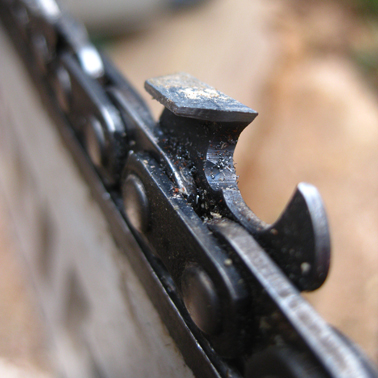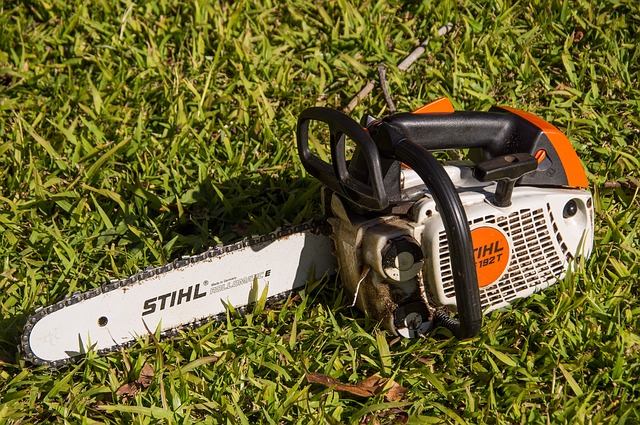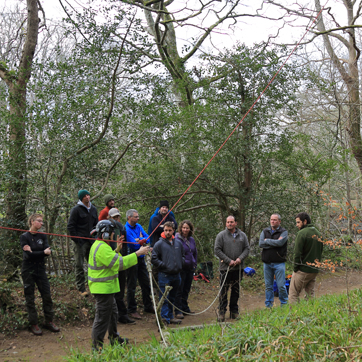
A Guide to Chainsaw Safety Best Practice
There are many uses for chainsaws in outdoor work but undoubtedly the most common area in which you’ll find chainsaws at work is in tree surgery. Whether it be corrective or maintenance pruning, removal of dead or unstable branches or dealing with tree diseases, there are plenty of reasons why tree surgeons may be required to use chainsaws to remove parts of the tree or even fell the tree entirely.
In this article I want to look at health and safety best practice for chainsaw operators and the employers they work for. We’ll start by looking at the onus on employers to carry out a proper risk assessment.
Conducting a Risk Assessment Before You Use a Chainsaw
It’s vital that employers understand their responsibilities when it comes to work environments in which chainsaws will be in use. A proper risk assessment needs to be carried out, which will ascertain what the risks are, and whether you are doing enough to limit these risks.
A risk assessment should involve the following five distinct steps:
1. Identify hazards
Whether they’re related to physical or mental health, or resulting from chemical or biological risk factors. In chainsaw use, this could include factors such as uneven or slippery surfaces, obstructive objects, overhead power lines or loud machinery. More specifically, in aerial tree work this would be looking at branch and overall tree stability.
2. Identify who is at risk
Which includes all employees, agency staff or contractors, visitors and members of the public. In chainsaw use, this will obviously include the chainsaw operator, but potentially anyone in his or her vicinity. In the case of aerial tree work, this could mean any ground workers at risk from falling branches.
3. Assess risks
Determine how likely these hazards are to cause serious harm. Action then needs to be taken where required, by implementing policies, procedures or training that mitigates against them.
4. Keep records
Of all your findings so you can systematically evaluate each and take appropriate action. In organisations with more than five employees this is a legal requirement. It will also act as proof that risks were identified and appropriate actions taken out to reduce them.
5. Constantly review
Risks so that you are confident that procedures are being followed by all staff and managers. This will also help you identify new risks as working practices change or new machinery is introduced.
Let’s look now in more detail at that last point and discuss the importance of establishing the suitability of an employee to use a chainsaw.

Worker Fitness and Suitability in Chainsaw work
It’s crucial that employers establish the fitness and suitability of a worker to use a chainsaw and to assess all employees in this regard on a regular basis. Some medical conditions may prevent some people from ever using a chainsaw, whilst others may require constant monitoring to make sure they don’t become an unacceptable risk.
Medical conditions that can affect suitability for chainsaw operation can be broken down into six distinct types:
- Conditions affecting mobility
- Conditions affecting alertness
- Conditions affecting physical strength
- Conditions affecting vision
- Conditions affecting manual dexterity and/or grip
- Conditions affecting balance
New workers and young workers should also be considered high risk and appropriate risk assessment, monitoring and training be put in place to limit the chance of injury whilst operating a chainsaw. Although it’s rare you’ll employ a person under 18 to use a chainsaw, students and trainees are considered employees under health and safety law.
With all new workers, the biggest risk factor is lack of experience and so a proper assessment of a new starter’s capabilities, health and any relevant experience is crucial. The next step is to then provide the appropriate training, which is what we’ll look at now.

Employee Chainsaw Training
The Management of Health and Safety at Work Regulations 1999 requires all employers to provide health and safety training for new workers. For chainsaw workers this initial training is of huge importance and must be adequate.
Employees using chainsaws for any task in agriculture or industry must be assessed as competent under the Provision and Use of Work Equipment Regulations 1998 (PUWER 98). Any worker carrying out work on or in a tree, according to the PUWER 98 guidance, must have ‘obtained a relevant certificate of competence or national competence award, unless they are undergoing such training and are adequately supervised.’
The exceptions to these rules are for work relating to an agricultural operation (hedging, clearing fallen branches, etc) that is being carried out by the occupier or their employees and only if they have used a chainsaw before 5th December 1998.
All chainsaw training needs to be conducted by qualified instructor, who holds the relevant competence award or certification. Training shouldn’t be limited to inductions either and employees should attend regular refresher courses. The frequency of these is based on how often chainsaws are used with occasional users attending a refresher course every 2-3 years and full-time chainsaw operators every 5 years.
Personal Protective Equipment for Chainsaw Workers
I will conclude with some details on chainsaw PPE. It is the employer’s legal duty to provide all chainsaw operators the appropriate personal protective equipment and clothing. It’s also important that employees know how to put on and secure all PPE and that this equipment is maintained and assessed for safe use on a regular basis.
Below is a list of the appropriate PPE that chainsaw operators need to be wearing whenever they are operating a chainsaw.
- Chainsaw Trousers to EN 381-5.
- Chainsaw Boots to BS EN ISO 20345:2004 (showing a shield depicting a chainsaw to comply with EN 381-3)
- Chainsaw Helmets to EN397 or for aerial use of a chainsaw
- Chainsaw Helmets with chinstrap to EN12492
- Chainsaw Hearing Protection to EN 352-1.
- Mesh Visor or safety glasses to EN 166.
- Chainsaw Gloves to EN 381-7.
For a comprehensive and detailed breakdown of all the Health and Safety Executive’s guidance on safe chainsaw practice and advice on appropriate awarding bodies for training please visit the HSE website or read their Chainsaws at Work INDG317 Leaflet (opens as PDF).
